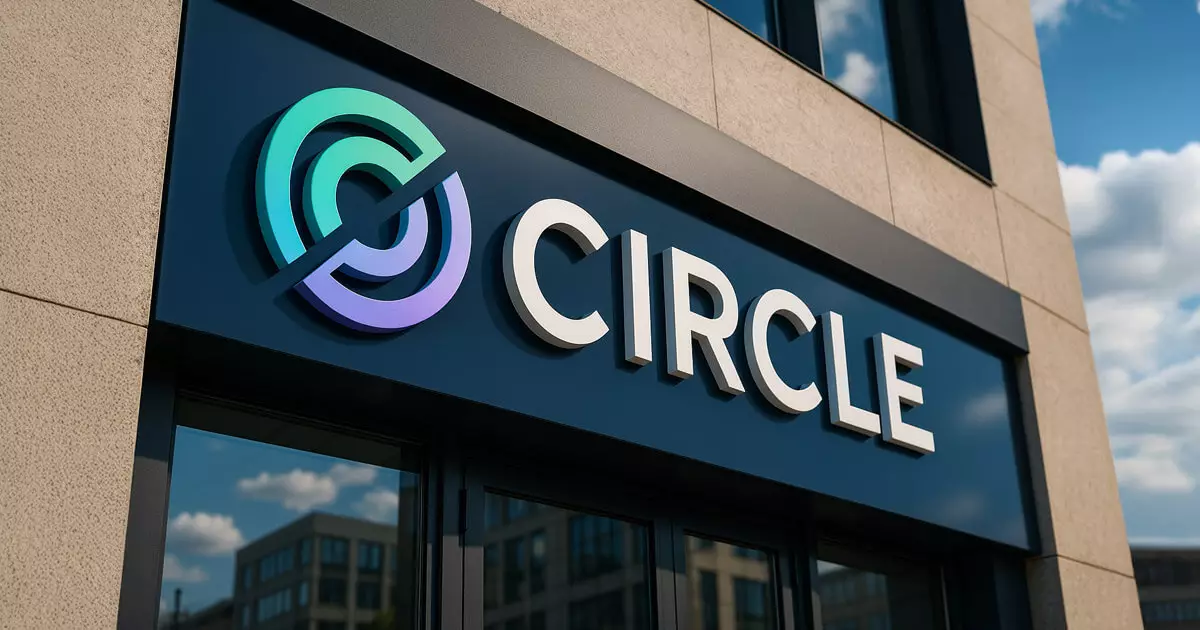Circle, a prominent player in the blockchain industry, is navigating a complex intersection of growth and potential acquisition as it prepares for its much-anticipated initial public offering (IPO). With aspirations targeting a $5 billion valuation, the stability and sustainability of its business model are now under the microscope. The current climate indicates that initial public offerings, especially in tech-centric industries, are prone to unpredictability—an unsettling condition for any company seeking capital. This has led to a strategic fork in Circle’s path where going public could either secure its grasp on independence or lead to a forced partnership.
The recent insights from insiders about potential acquisition talks with Coinbase and Ripple add an interesting layer to Circle’s roadmap. While considering an IPO, one has to question whether a sale might yield greater benefits in the long run. The realities of corporate competition in the cryptocurrency space dictate that the most agile survive; thus, the pressure is on Circle to make a strategic decision that could alter its trajectory.
An Existing Relationship: Coinbase’s Concrete Interest
Circle’s ongoing relationship with Coinbase represents a narrative ripe with interdependencies. Originally established as partners through the now-dissolved Centre Consortium, both companies shared governance over the USDC stablecoin. Following the structural changes in 2023, Circle has retained exclusive control over USDC—a move that strengthens its position but also creates potential friction with Coinbase. As both firms have facilitated a substantial revenue stream from USDC-related activities, insiders indicate that the prospect of Coinbase acquiring Circle might be the most beneficial scenario.
However, this dependence raises critical concerns about autonomy and operational integrity. If the talks take a more tangible direction, will Circle forfeit its capacity for innovation by becoming a subsidiary of a larger entity? In an industry where nimble decision-making is essential, could Circle’s future be compromised should it be tethered to Coinbase’s corporate philosophy?
The Ripple Approach: A Low Ball Offer?
On the other side, Ripple has expressed interest in Circle with a proposed offer in the ballpark of $4 to $5 billion, which Circle reportedly rejected as inadequate. This raises eyebrows, particularly considering the synergies that could be realized between these two firms. Ripple’s existing XRP assets value in the billions could provide the financial muscle needed to expand Circle’s influence and innovation. However, this dismissal of the offer marks a bold stance; for Circle, the rejection indicates a strong belief in its long-term potential or a negotiation strategy to pressure Ripple into offering more.
Ripple’s ongoing ambitions are laudable, but the competition strategy especially when tangled in legal battles could inhibit its acquisition objectives. The current climate surrounding Ripple, specifically regarding regulatory scrutiny, may dilute its attractiveness as a buyer. While Ripple’s track record in acquisition provides some weight, it does not equate to the strategic alignment with Circle that Coinbase could potentially offer.
The Power of Cash Reserves in Acquisition Discussions
Coinbase’s financial fortitude further amplifies its attractiveness as a potential acquirer. With approximately $8 billion in cash reserves, the firm has shown a vaulting ambition through recent acquisitions, indicating a readiness to grow its ecosystem. As the crypto market continues to experience volatility, having the liquidity to pounce on valuable assets like Circle could solidify Coinbase’s lead in an already crowded market.
The considerations of integrations and long-term strategy become critical. As Coinbase’s CEO Brian Armstrong has articulated, the complexity of mergers and acquisitions entails a degree of selectivity. This diligence in evaluation may either frustrate potential opportunists like Circle or pave the way for a more beneficial alliance rooted in shared vision and assets.
In an industry where stability can waver as quickly as market trends, the fate of Circle rests on pivotal decisions. The company’s ability to navigate these waters will define its future—whether as a public entity commanding its destiny or a subsidiary redefining its aspirations under a new roof. The stakes are high; the implications profound. In this highly competitive landscape, the decisions made in the coming months could determine whether Circle emerges a leader or a cautionary tale.


Leave a Reply